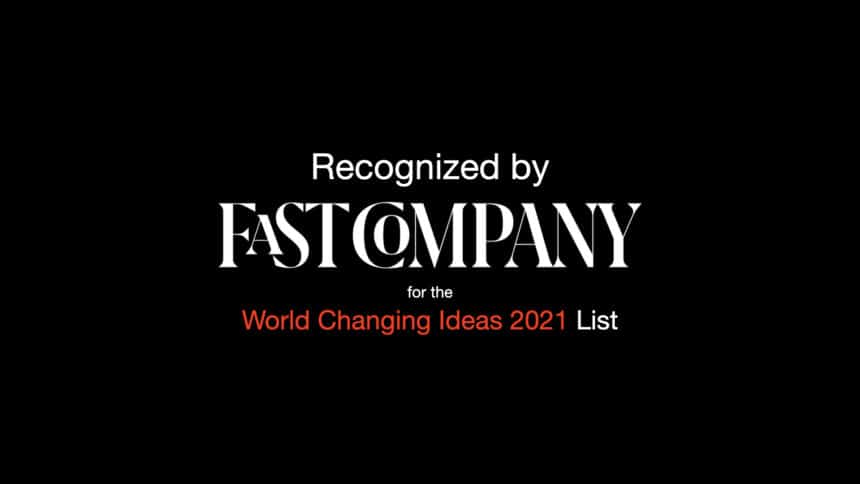Today we received a wonderful message from New York:
Stephanie Mehta here. I’m the editor-in-chief of Fast Company, and I’m pleased to share that MyMachine DreamsDrop has been selected as part of our List of 2021 World Changing Ideas Awards. Congratulations!
Every year, Fast Company’s World Changing Ideas Awards honor the businesses and organizations driving change in the world. The projects we honor in the World Changing Ideas Awards are more important than ever. You and your fellow honorees are playing an important role in building a better world. We’re proud to support the bold ideas you’re working on.
A team of Fast Company editors and writers helped us comb through the entries and determine which ideas were creative and meaningful enough to be included in our list.
We are honored to be able to recognize your achievements in creating a World Changing Idea—and to include you as part of this remarkable list of innovative solutions.
____________
🌐 About this important recognition
Fast Company is a monthly American business magazine published in print and online that focuses on technology, business, and design. Stephanie Mehta was named editor-in-chief in February 2018, having previously worked as a writer and in similar positions at Vanity Fair, Bloomberg, Fortune, and The Wall Street Journal.
Worldwide, a Fast Company’s recognition is being highly esteemed, both with organisations as with individuals. For one, Sir Ken Robinson was keen on mentioning that he was acclaimed by Fast Company magazine as one of “the world’s elite thinkers on creativity and innovation” .
We are obviously immensely proud and want to specifically thank all involved students, educators and the whole MyMachine team worldwide. 🙏🏼
🌐 About MyMachine DreamsDrop
MyMachine DreamsDrop is a brand-new complementary program. It is an online world-map that invites anyone (adults and children alike) to upload their dream machine idea.
In addition, once a year, we organize an open call to primary school teachers to join with their classroom, combined with a call to university professors to participate with their students.
MyMachine DreamsDrop consists of 3 steps:
- The children in the primary class invent, make a drawing of it, and upload their idea to our MyMachine DreamsDrop world-map. All participating children receive a personalized MyMachine Diploma.
- We select some of these ideas, making sure they come from different countries on several continents.
- We connect those selected ideas to College students that will conceptualize the idea, and produce a Proof-of-Concept.
We use online technology to connect the child-inventors with the university students to enable them to collaborate and give feedback on the conceptualization.
We have piloted this in the past year for the very first time. In this pilot, we picked 15 ideas from different primary schools in Mexico, Ecuador, South Africa, Mozambique and India. We connected the selected ideas to college students at the School of Industrial Product Design at Howest University in Belgium. Our first campaign resulted in proofs-of-concept like a.o. the Clean-The-Umbrella-Of-My-Granddad-Machine, the Machine-To-Talk-To-My-Deceased-Family-Members, and The Take-Away-The-Smartphone-From-My-Parents-So-That-They-Can-Play-With-Me-Machine.
As we speak the MyMachine DreamsDrop Campaign 2021 is running. Over 550 children in primary class participated from 21 countries. We have selected 39 ideas that are now in the process of being conceptualised by university students in Belgium (Howest University of Applied Sciences) and Mexico (Monterrey Tech).
MyMachine DreamsDrop has three unique objectives:
- It enables us to scale our impact on students and educators to countries where we don’t have a Chapter running yet;
- it allows us to identify the regions where a lot of uploads are being made. This will trigger us to evaluate potential partners to set up a real MyMachine Chapter in that region;
- the whole world-map becomes a rich database of all sorts of ideas, matched with the United Nations Development Goals. We can browse and filter the ideas on different parameters, like gender, age, development goals, country, city etc. Soon we will conduct research on this data, to map how youth is creative, what topics they are concerned about and how they envision solutions.


